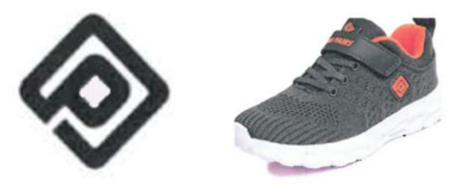It’s not “that” often that a relatively straightforward trade mark infringement case reaches the UK’s highest Court, but on Tuesday 24 June 2025 the UK Supreme Court handed down its judgment in one such case, providing useful guidance on the obvious (but not really obvious, because it’s so obvious, or is it?) question of what type of use infringes a UK mark.
Iconix, the owner of the longstanding brand Umbro and its diamond shaped marks, e.g.:

– had sued Dream Pairs in the High Court for trade mark infringement in relation to footwear branded with another diamond shape (sort of), which predictably appeared on the side panels of shoes:

However the claim was dismissed on the basis that there was “…at most a very low degree of similarity…” between the marks. 0 – 1 to Dream Pairs.
Iconix appealed and persuaded the Court of Appeal to examine confusion afresh. This time, the Court found a moderate degree of similarly when the marks were examined in a “…post-sale context…” – for example, when the footwear is worn by a player at a football game with a viewer standing nearby and looking at it from above / at an angle. Scores on the doors, 1 – 1.
Dream Pairs further appealed that reasoning to the Supreme Court, on the grounds that extraneous circumstances, such as how the goods are “perceived”, are not relevant to infringement; and that confusion is to be assessed at the point of a subsequent sale (or other transaction) in the goods, rather than mere use.
However the Supreme Court disagreed, finding that “…realistic and representative post-sale circumstances can be taken into account for the purpose of establishing whether the signs at issue are similar…”, and if so, to what extent. They were also unmoved by the contention that only confusion as to origin at the point of a subsequent sale could infringe, finding no support for that contention in EU or UK case law.
Therefore Dream Pair’s arguments in law were rejected. However the Supreme Court did not find any irrationality, error or principle of law in the original High Court decision sufficient to justify the Court of Appeal taking their own view on confusion. The High Court’s original decision therefore stands. 1 – 2 to Dream Pairs by the final whistle.
UK jurisprudence has at times had a strained relationship with the question of infringement (witness the turn-of-the-millennium case of Arsenal v Reed, which came up here). While ultimately no infringement was found based on the marks, the Supreme Court’s ruling does provide a welcome clarification, especially for trade mark owners in the fashion / apparel industries, of when and in what circumstances a particular use can, even in principle, infringe. Which (helpfully) means that real-world uses and circumstances can be taken into account, and the brand owner does not have to wait around for a somewhat artificial “subsequent-sale” to take place before claiming infringement.
(Full case reference – Iconix Luxembourg Holdings SARL (Respondent) v Dream Pairs Europe Inc and another (Appellants), [2025] UKSC 25, 24 June 2025)